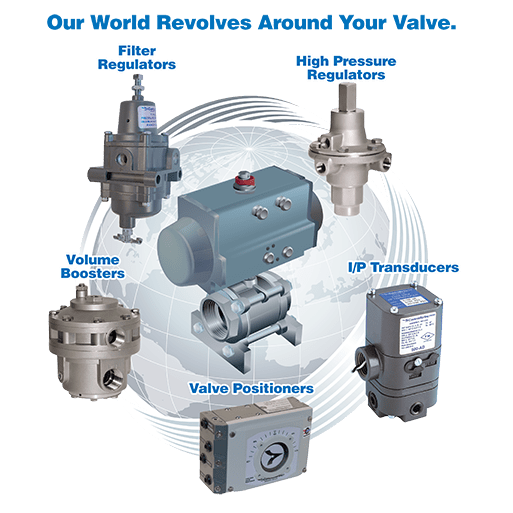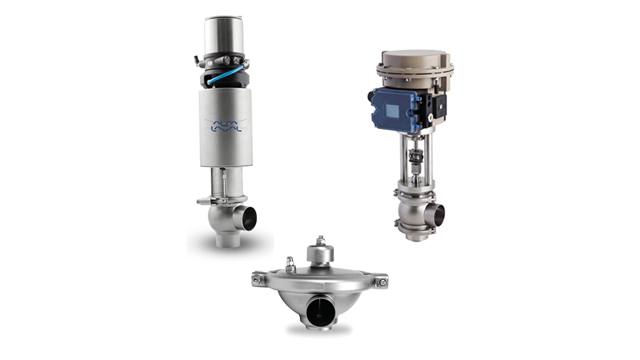Ingenious Control Valves: Enhancing Precision and Reliability
Ingenious Control Valves: Enhancing Precision and Reliability
Blog Article

Maximize Power Financial Savings and Convenience With Advanced Building Automation Controls
In the world of modern design and center management, the assimilation of sophisticated structure automation controls stands as a pivotal advancement. By using the power of automation, structures can adapt, react, and progress in means that were once unbelievable.
Power Efficiency Conveniences
Energy performance benefits can considerably reduce power intake and functional costs in structures. By carrying out energy-efficient techniques and modern technologies, building proprietors and operators can achieve considerable financial savings while additionally adding to ecological sustainability. Among the primary advantages of improving energy efficiency in buildings is the reduction of utility costs. Energy-efficient systems, such as advanced structure automation controls, can maximize making use of sources like air conditioning, illumination, and heating, resulting in lower energy expenses in time.
In addition, improved energy effectiveness can prolong the lifespan of structure equipment and systems. By running much more efficiently, HVAC systems, lighting fixtures, and other building parts experience less damage, resulting in lowered maintenance and substitute costs. Furthermore, energy-efficient buildings typically command higher building values and rental prices, providing long-lasting economic benefits to proprietors.
Additionally, energy performance can boost resident convenience and performance. Correctly managed interior settings with optimal illumination and thermal problems produce a more pleasurable and helpful work area, causing improved staff member fulfillment and efficiency. On the whole, the energy effectiveness advantages related to sophisticated building automation controls are multifaceted, incorporating cost savings, environmental stewardship, and resident wellness.
Improved Comfort Control
Enhancing convenience control in structure settings calls for a sophisticated integration of sophisticated automation systems for ideal owner health. By utilizing sophisticated structure automation controls, facilities can tailor the interior environment to fulfill the particular requirements and preferences of residents. These systems make it possible for precise regulation of lights, temperature, and ventilation, producing a comfortable and effective ambience. Resident contentment and productivity are closely linked to thermal comfort, making it important to have systems in area that can adjust to changing problems in real-time.
Boosted comfort control surpasses fundamental temperature level modifications. It includes functions such as individualized setups, occupancy sensing units, and natural light application to develop a vibrant and receptive environment. By integrating these innovative controls, buildings can not just boost comfort yet also enhance power efficiency by enhancing system procedures based on real tenancy and usage patterns. Inevitably, prioritizing occupant convenience with innovative automation systems results in a more satisfying and healthier interior environment.
Operational Efficiency Improvements

In addition, the execution of real-time surveillance and analytics devices enables structure operators to recognize energy inefficiencies and functional abnormalities immediately. By continuously keeping track of power usage patterns and system efficiency metrics, adjustments can be made in real-time to maximize energy intake and ensure peak functional efficiency. control valves. Furthermore, including demand feedback approaches right into building automation controls can additionally enhance operational performance by dynamically readjusting energy usage based upon grid problems and pricing signals
Indoor Climate Optimization
Reliable interior climate optimization is an essential facet of building automation controls, making certain residents' convenience and well-being while optimizing power savings. By using innovative sensing units and controls, building automation systems can continuously readjust and check temperature, humidity degrees, air top quality, and ventilation to develop an see it here optimal interior environment. Preserving constant and comfortable problems not just improves passenger fulfillment however additionally improves productivity and overall health.
Indoor climate optimization likewise plays a vital function in power performance. By fine-tuning ventilation, heating, and air conditioning systems based on real-time data and tenancy patterns, building automation controls can considerably decrease power intake - control valves. Carrying out techniques such as demand-controlled air flow and thermal zoning can help reduce power waste while guaranteeing that each area of the structure receives the essential conditioning.

Lasting Setting Development
Building automation manages not just maximize interior environment conditions for energy efficiency and owner convenience but additionally lay the structure for producing a sustainable environment through critical administration of sources and systems. By incorporating advanced structure automation technologies, such as sensing units, actuators, and intelligent software, centers can check and change power use in real-time to lessen waste and minimize their carbon footprint. These systems allow predictive maintenance, determining potential issues prior to they intensify and optimizing devices performance to enhance long life and performance.
Furthermore, lasting setting production extends past power management to include water preservation, waste reduction, and indoor air high quality enhancement. Structure automation controls can regulate water usage, detect leaks, and make sure proper garbage disposal techniques, adding to total sustainability initiatives. In addition, by managing and keeping an eye on air flow and filtering systems, these modern technologies boost owner health and productivity while decreasing energy consumption related to cooling and heating procedures.
Verdict
Finally, advanced building automation controls offer considerable benefits in terms advice of energy cost savings, convenience control, operational effectiveness, indoor climate optimization, and creating a sustainable environment. By implementing these controls, structures can attain ideal performance while reducing power intake and enhancing passenger comfort. It appears that using sophisticated automation innovation is critical in boosting building efficiency and producing an extra lasting future.
Energy effectiveness benefits can substantially lower power intake and operational prices in buildings. In general, the power performance benefits linked with sophisticated structure automation controls are multifaceted, incorporating price savings, ecological stewardship, and resident health.
In addition, including need response techniques into structure automation controls can better improve operational performance by dynamically adjusting energy use based on grid conditions and pricing signals.
Building automation controls not just maximize indoor environment problems for energy effectiveness and occupant convenience however additionally lay the structure for producing a lasting atmosphere via critical monitoring of systems and resources.In verdict, progressed building automation controls deal considerable benefits in terms of power financial savings, comfort control, functional effectiveness, indoor environment optimization, and creating a sustainable environment.
Report this page